There seems little case for moving rates in either direction, with the RBA now likely to wait on the Fed’s December interest rate decision. The global economic environment is stable for the moment and the timing seems right for a Fed rate increase. The implications of such a rise on global markets remains uncertain, with a muted reaction to such a rise strengthening the case for an RBA increase rather than a further decrease in the cash rate at some point during 2016.
Outcome: December 2015
No Need for Holiday Season Rate Cut
The big drop in the Australian unemployment rate grabbed the headline this week. Headline inflation, at 1.5% (year-on-year) below the RBA’s target band of 2-3%, remains well contained and GDP growth, at 2% annualized, soft. The CAMA RBA Shadow Board on balance prefers to keep the cash rate on hold, attaching a 67% probability to this being the appropriate policy setting. The confidence attached to a required rate cut equals 22%, down four percentage points from the previous month, while the confidence in a required rate hike has risen slightly to 11%.
According to the Australian Bureau of Statistics, Australia’s unemployment rate fell in October from 6.2% to 5.9% though the accuracy of recent ABS numbers is questionable. Employment, both full time and part time, has expanded and the participation rate reversed its recent decline. These are all positive signs.
The Aussie dollar continues to trade around 72 US¢. Yields on Australian 10-year government bonds have risen, most recently to 2.82%.
The outlook for the Australian property market has not changed appreciably. At this stage, it appears that the property market is cooling gently, preparing for a soft landing, rather than an abrupt correction. As predicted, the S&P/ASX200 continues to move sideways around the 5200 mark.
Global markets are preparing for the US Federal Reserve to raise the federal funds rate during its last FOMC meeting of the year. Given the most recent rhetoric by the Federal Reserve Bank Governor Janet Yellen, this looks more likely than ever. Recent US growth data have surprised on the upside and other US economic indicators point to a healthy economic expansion. On the other hand there remain risks to the global economy. These include geopolitical tensions, following the terrorist attacks in Paris, as well as economic risks associated with emerging countries’ excessive debt levels.
Consumer and producer sentiment measures continue to paint a motley picture. After successive drops, the Westpac/Melbourne Institute Consumer Sentiment Index rose for a second month in a row, to 102 in November, from 97.8 in October. Business confidence, according to the NAB business survey slid further, fell again, from 5 to 2. The AIG manufacturing and services indices, leading economic indicators, both fell.
The Shadow Board’s confidence that the cash rate should remain at its current level edged up from 65% in November to 67%. After last month’s noticeable shift, the confidence that a rate cut is appropriate has dropped again to 22% (26% in November); the confidence that a rate increase, to 2.25% or higher, is necessary has risen to 11% (9% in November).
The probabilities at longer horizons are as follows: 6 months out, the estimated probability that the cash rate should remain at 2% is nearly unchanged at 23% (24% in November). The estimated need for an interest rate increase has slightly increased, to 60% (58% in November), while the need for a rate decrease has slipped to 17% (19% in November). A year out, the Shadow Board members’ confidence that the cash rate should be held steady is unchanged at 18%, while the confidence in a required cash rate increase equals 67% (unchanged from November) and in a required cash rate decrease 16% (15% in November).
Aggregate
Current
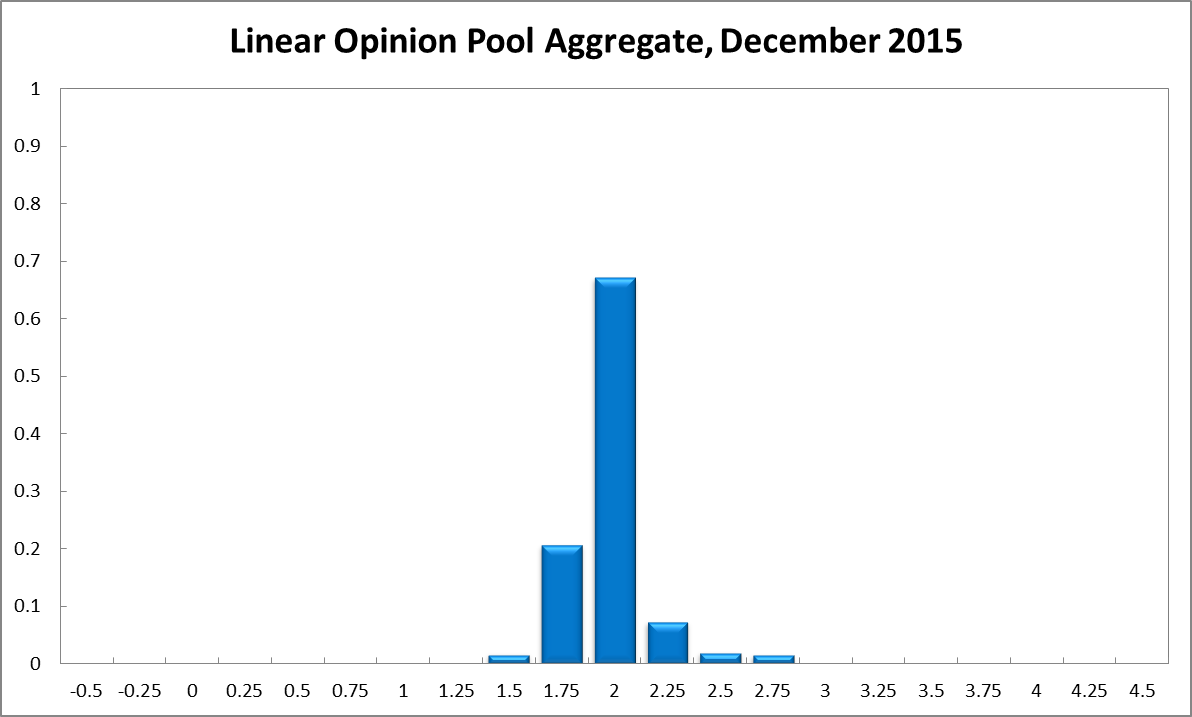
6-Months
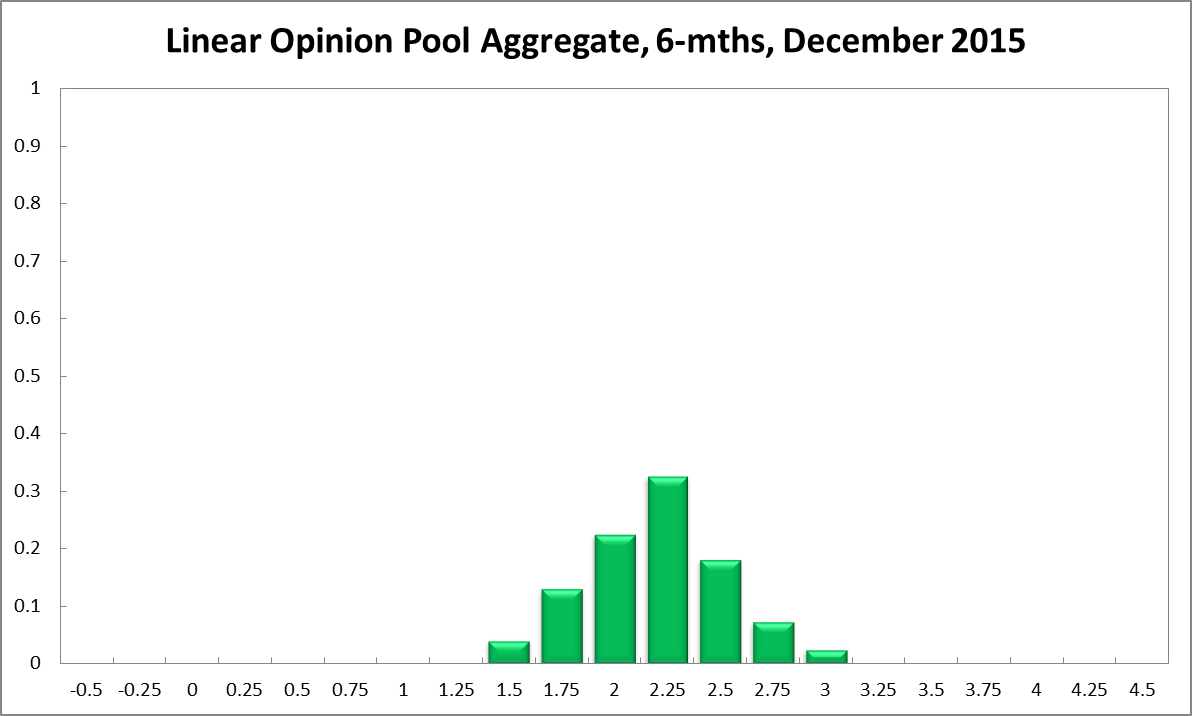
12-Months

Paul Bloxham
Current

6-Months

12-Months
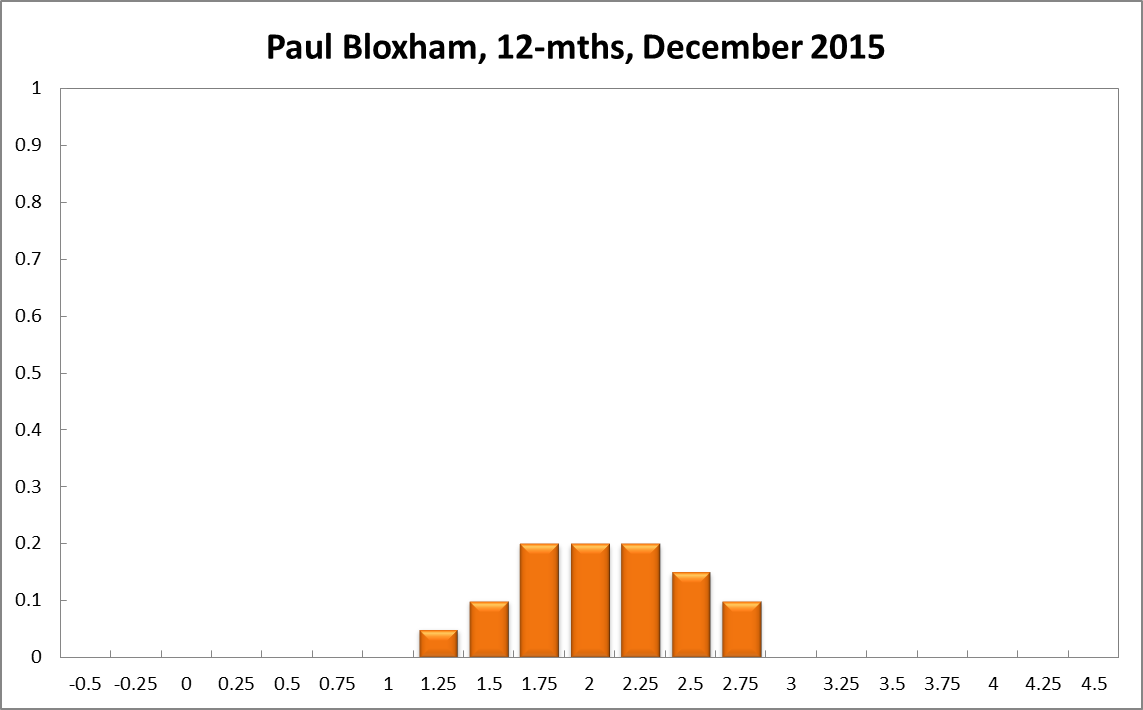
Mark Crosby
Current
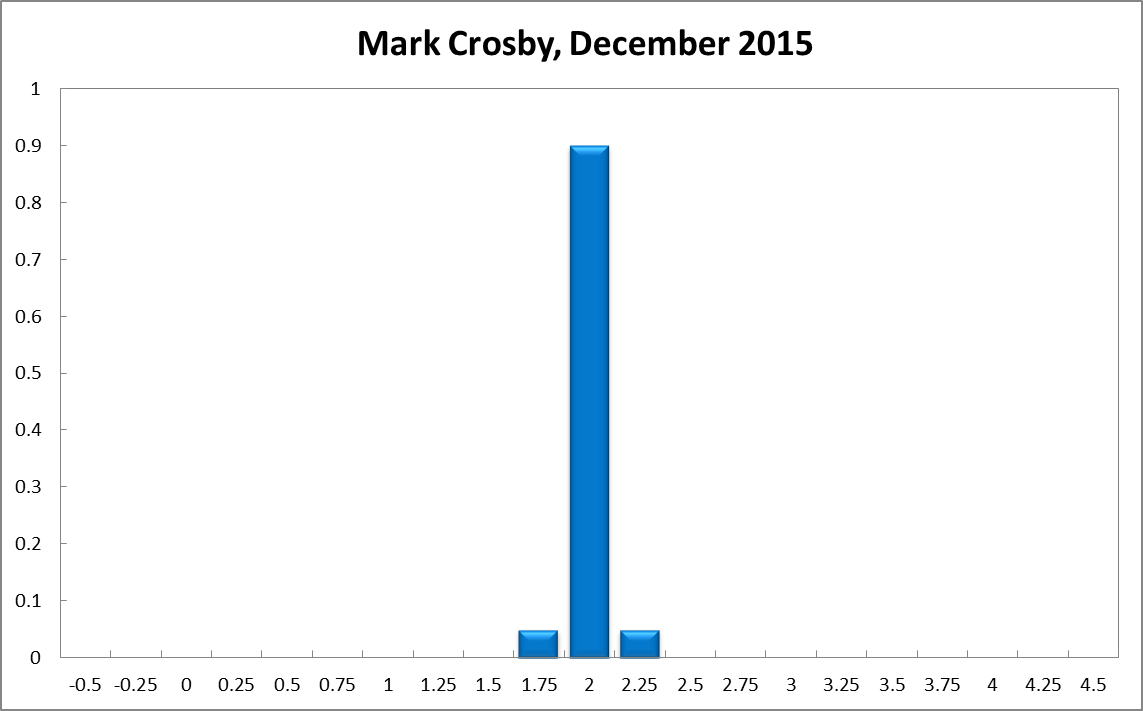
6-Months

12-Months

Comments
Bob Gregory
Current

6-Months

12-Months

Guay Lim
Current

6-Months

12-Months
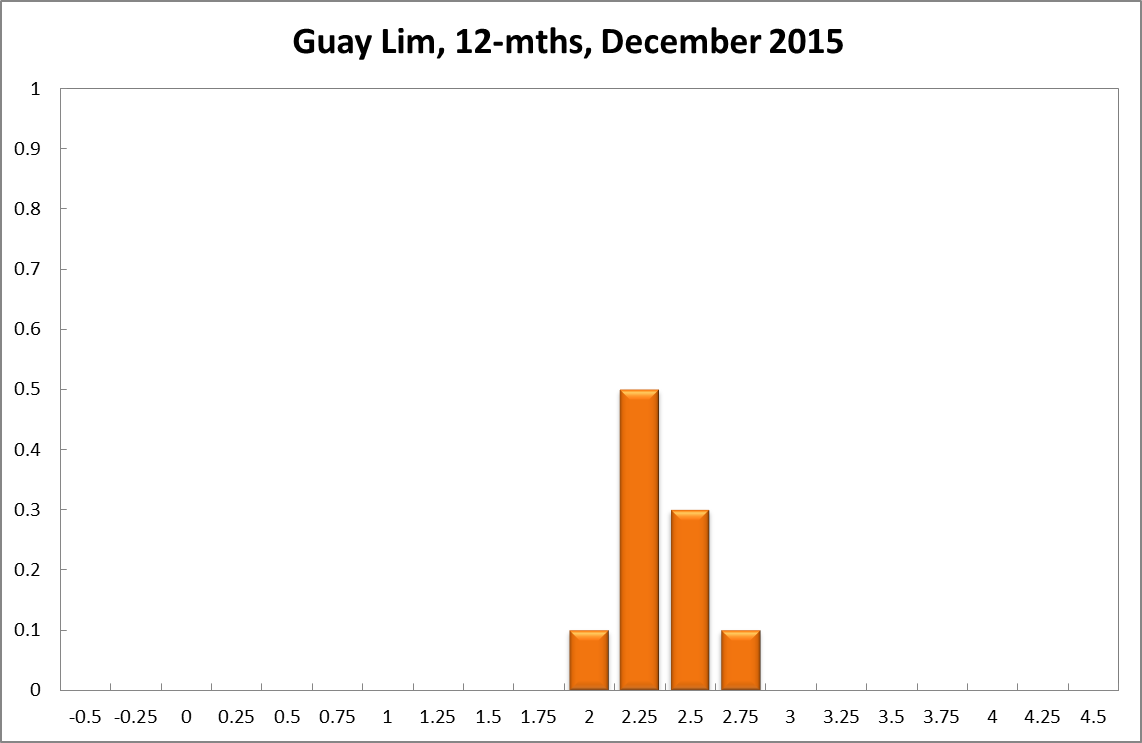
Warwick McKibbin
Current

6-Months

12-Months

James Morley
Current

6-Months

12-Months
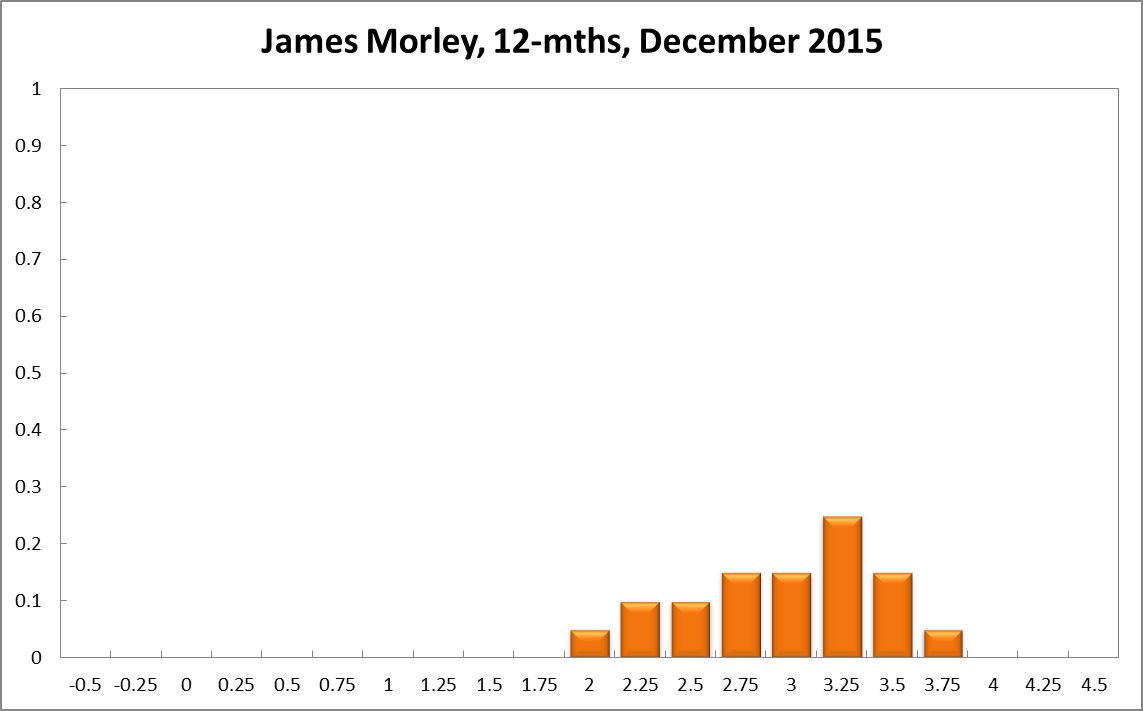
Comments
Inflation expectations remain well anchored and the unemployment rate has fallen to 5.9%. The RBA should hold its policy rate steady this round, but with an eye to returning it back to its neutral level over the medium term.
John Romalis
Current

6-Months
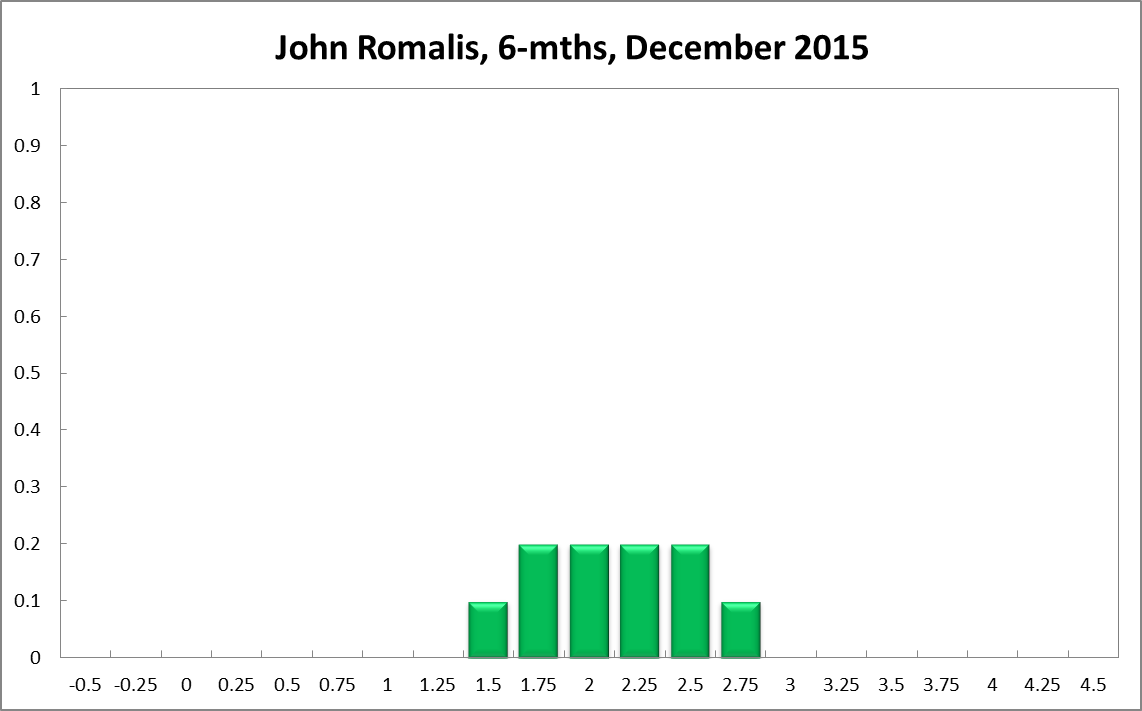
12-Months

Jeffrey Sheen
Current

6-Months

12-Months

Comments
Monetary policy needs to remain accommodating for some time to come. Non-commodity sectors have to expand to counteract the declining contribution to growth of the commodity sector. The next global crisis is likely to come from overblown emerging economies to which Australia is heavily exposed. Low(er) interest rates and in turn a low(er) real effective Australian dollar are needed for both future growth recovery and an essential diversification of the economy.